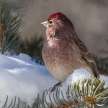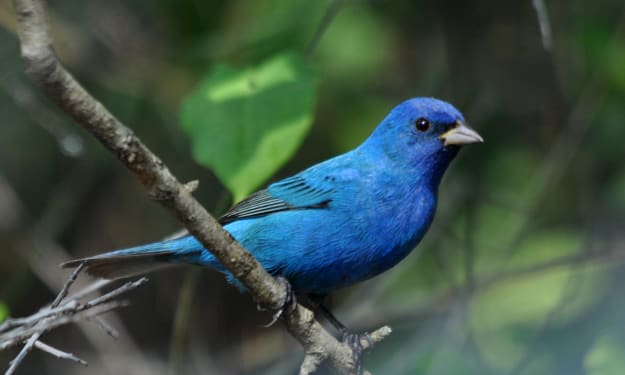
Brushland Tinamou extends from southern Bolivia through southwestern Paraguay to north-central Argentina, where it inhabits dry savanna forests, desert scrub, grassy steppes, boundaries, and even flooded savannas in general. It can be found up to about 2000 m but typically occurs at lower elevations. The relatively small range of this species and, more specifically, its habitat needs (opener areas) have made Brushland Tinamou one of its family's better-studied members. The sexes are essentially the same as having darker barred greyish to olive brown upperparts, a blackish crest, and whitish to greyish underparts, with barred flanks. Although males are typically solitary birds, females generally fly around in ' pairs ' or sometimes even in small groups, which can extend through several male territories. Brushland Tinamous feed on a number of invertebrate preys, as well as on fruits and seeds. Tinamous are small birds with very short tails and long wings; they resemble superficially tailless quails. Brushland Tinamou is a tinamou of medium size with a long tail, a low crest and a strongly decurved bill. It has a rotund form, and a mysterious, streaked plumage. It is mainly dark above, and it appears to have two small white stripes on the feathers on its tail, black barring and grey edging. On its hind neck there are large black stripes, and long black feathers in its crown that can be briefly raised to form a crest. The breast is brown with white splotches and is whitish in the chest and belly. The flanks are a buffy grey, dusky. Adults have somewhat elongated crown feathers, and black, or white with black centres. Upperparts are otherwise mostly greyish to light brown olive, patterned with short whitish lines, black bars and black vermiculations. Nape and sides of neck often broadly striped with black. Remiges dusky brown, uniformly inked or marked outer branches of white buffalo. The sides of the head, throat and foreneck, particularly afterwards, are white, strongly patched or barred with black. Pale grey or greyish brown breast, spotted with hair. White flanks with light brown barring, and often tinged with buff. Black butt. Brushland Tinamou's diet is composed of budding leaves, plant shoots, vegetables, and insects. Insects make up a large portion of their diet; the main insects eaten include ants, beetles, and cicadas. These tinamous ones are opportunistic foragers and eat mollusks while they are in the proximity of an irrigation ditch. Brushland Tinamou trees on the grass, creeping around with their low head. It normally gleans from the ground using its bill, but often leaps upward or even hops for low hanging fruit. Most of the insects that it catches are quickly consumed, but huge beetles and cicadas are beaten to the ground before feeding. Specially after it rains, it will check the soil for earthworms and insect larvae. Once an earthworm is trapped, a tinamou shakes the worm by tossing its head from side to side rapidly, jabbing the worm and then swallowing it. It uses the bill, but not the paws, to pick off twigs and leaf litter while it forages. A tinamou cleans his bill after snoring the soil by rubbing it against the stone, a leaf, a stick, or a grass stem. Occasionally the bird cleans his bill by taking a blade of grass and running the bill over the grass with a jerk of his head sideways. Tinamous Brushland drinks seldom. They extend their neck out while they drink, and place the distal end of the bill in the beer. As they drink, they make 6-12 throat movements and as they swallow, they lower their head towards the mouth but do not lift it upwards. When tinamous approach each other early in the breeding season they go into defensive postures in which they crouch and keep their head low to the ground. Generally these partnerships don't lead to a pursuit. But birds appear to be more aggressive later in the season. They line up straight with their arms extended out and if no bird retreats, they run at each other and threaten to peck each other's heads. These battles usually end quickly, but occur in quick succession in bouts of up to five attacks. Often, the champion then chases the loser.
About the Creator
MB
I am a bird aficionado and really enjoy spotting them them on hikes. I greatly appreciate the variety of birds cross North America and the world. They are amazing and intelligent creatures, each so unique and with a wonderful life.






Comments
There are no comments for this story
Be the first to respond and start the conversation.